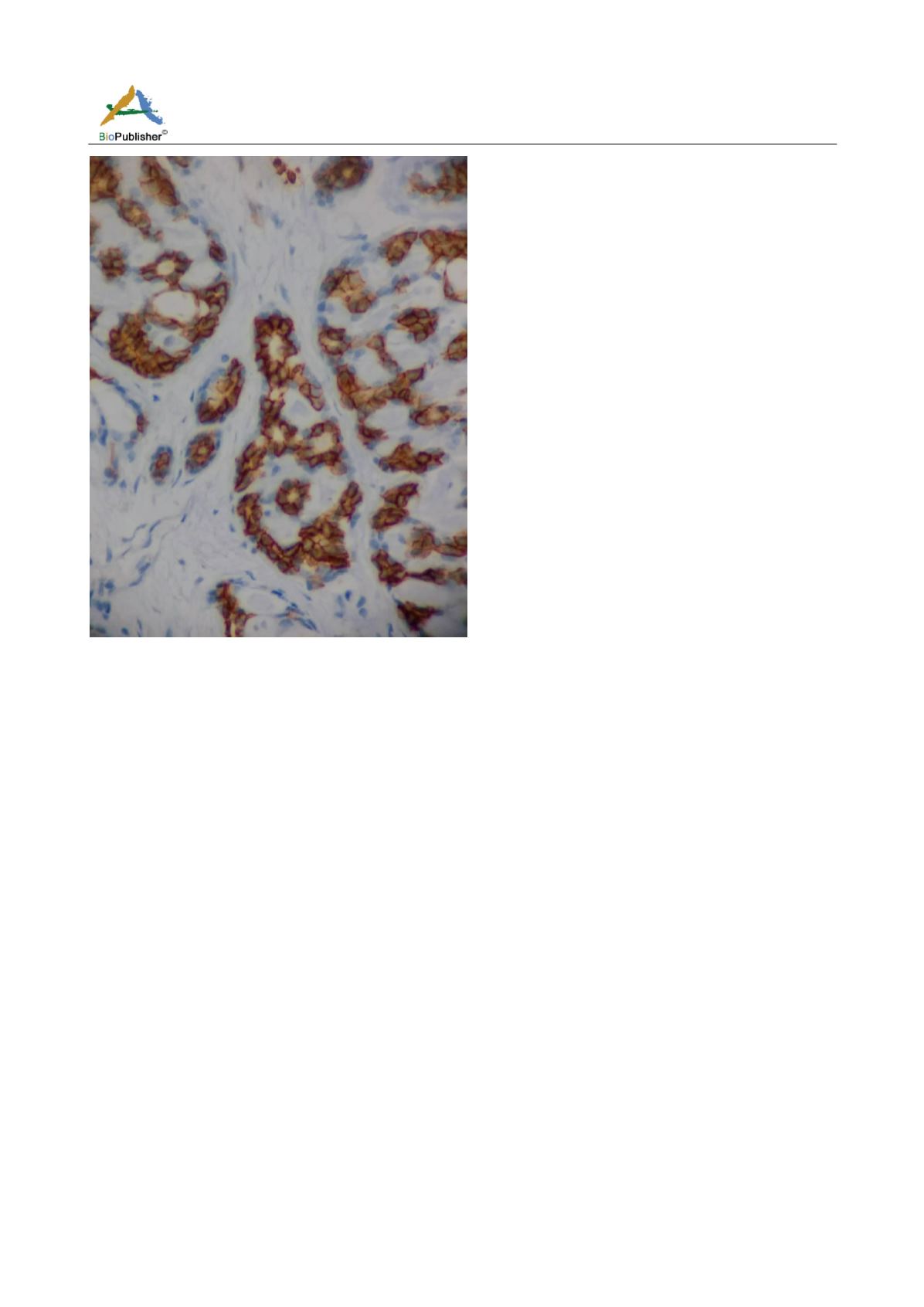
International Journal of Clinical Case Reports 2017, Vol.7, No.8, 33-37
35
Figure 5 Immunohistochemistry: c-kit. Tumor cells show cytoplasmic positivity
2 Discussion
ACC is a rare subtype of prostatic malignancies. Very few cases have been reported in the literature. The largest
case series includes 19 cases reported by Iczkowski et al. (2003).
ACC was first described in the salivary gland by bilroth in 1859. Other sites include maxillary antrum (Kim et al.,
1999) and skin (Chang et al., 1999) where it has an aggressive biologic potential. However, histologically
identical counterpart arises in lung (Kawashima et al., 1998) and breast (Arpino et al., 2002) and it has good
prognosis.
Histologically these cases exhibit either an adenoid or basaloid pattern. The basaloid pattern has an irregular solid
clump, trabeculae and cellular masses composed of basaloid cells. The adenoid cystic pattern has a sieve like or
cribriform arrangement of back to back infiltrating glands with central lumen containing mucin. Periodic Acid
Schiff-Alcian blue (pH 2.5) stains mucin blue indicating acidic nature of the mucin. Perineural invasion is a
common finding in these tumors.
ACC of prostate is a tumor with a significant potential for recurrence, metastasis and extra prostatic extension,
contrary to the conventional thought regarding this cancer (Iczkowski et al., 2003; Ahuja et al., 2011) making the
accurate diagnosis of this entity essential. These cases are frequently underdiagnosed due to normal PSA (Prostate
Specific Antigen) levels and negativity for PSA on immunostaining.
On IHC (Immunohistochemistry) the tumor cells show immunoreactivity for HMWCK (34βE12) in all reported
cases (Kawashima et al., 1998; Kim et al., 1999; Chang et al., 1999; Iczkowski et al., 2003; Ahuja et al., 2011;
Chang et al., 2013). Hence basal cells were thought to be the cells of origin. cKit is a promising marker which
helps distinguish ACC at various sites from other benign and malignant tumors. It has a sensitivity of 82-88% and
specificity of 87-88% for diagnosing ACC (Mino et al., 2003) A higher Ki67 index is used to distinguish ACC
from basal cell hyperplasia of prostate. PSA shows negativity on IHC. Expression of Her2neu in ACC of salivary
gland has been reported, but its credibility and usage in ACC prostate is limited. Smooth Muscle Actin (SMA) is


